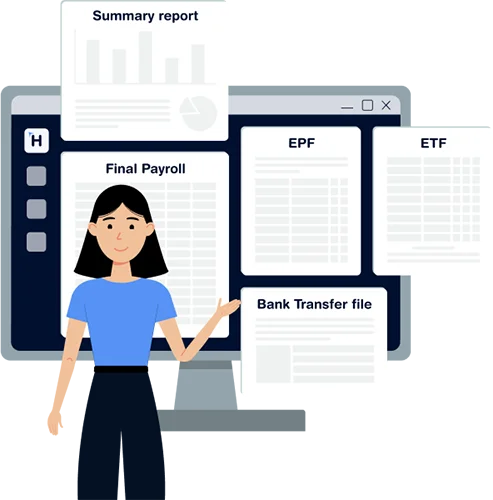For SMEs, HR processes often revolve around urgent needs: onboarding a new hire, processing this month’s payroll, or recording a resignation. But as businesses grow, a reactive approach to employee management can lead to disorganization, delays, and even compliance issues.
This is where a modern HRIS (Human Resource Information System) proves invaluable. Instead of handling each HR function in isolation, a good HRIS helps manage the entire employee life cycle, from the moment a person joins your company to the day they leave, and everything in between.
Let’s take a closer look at how HRIS software supports every stage of the employee journey for SMEs in Sri Lanka.
1. Streamlining Onboarding
First impressions matter. With an HRIS, new employees can fill out onboarding forms digitally, upload their documents, and get assigned to the right teams and departments without manual back-and-forth.
SMEs can eliminate paper-based processes, reduce data entry errors, and speed up onboarding. Whether you’re hiring two people or ten, you’ll have a consistent, professional process in place.
Key Features:
- Digital onboarding forms
- ID/document upload
- Automatic employee ID creation
- Pre-filled payroll and tax details
2. Centralised Employee Information
Instead of storing employee data across multiple Excel sheets, emails, and filing cabinets, an HRIS gives you a centralised employee database. From emergency contacts to salary revisions, everything is in one secure location: searchable, updateable, and auditable.
This improves efficiency, saves time during audits, and ensures no critical information falls through the cracks.
What You Can Store:
- Personal and employment details
- Job roles and reporting lines
- Contracts and revisions
- Performance history
3. Simplified Daily HR Operations
Leave requests, shift allocations, attendance tracking, and payslip access, all of this can be handled smoothly within an HRIS. Employees can log into their portals to apply for leave, check attendance, and download payslips, without having to message HR or use WhatsApp for updates.
Managers, in turn, can approve leave, review attendance summaries, and oversee shift planning more easily.
Popular Modules:
- Time and Attendance Tracking
- Leave Management with Approvals
- Payslip and Payroll Record Access
- Shift Management
4. Supporting Performance and Career Growth
Although not every SME implements formal performance reviews, having a system that tracks key milestones and performance history helps you make fair, informed decisions.
With some HRIS platforms, you can track salary adjustments, promotions, training participation, and more, giving you the visibility needed to reward talent and reduce turnover.
Even if you don’t use performance scoring features yet, just being able to record and review work history is a huge improvement over informal tracking.
5. Professional Offboarding and Exit Support
Offboarding is often overlooked. But it’s a key part of the employee life cycle, and a moment where many SMEs risk compliance issues or awkward missteps.
With an HRIS, you can handle resignations more smoothly: generate final payslips, calculate prorated salary and leave balances, and record exit dates and handover notes, all in a few clicks.
It also gives HR or admin staff the confidence to manage exits without worrying about missing steps or making payroll mistakes.
Why This Matters for Growing SMEs
As your business scales from 5 to 50 employees, trying to manage the entire employee life cycle manually becomes unsustainable. Each process, whether onboarding, attendance, promotions, payroll, or resignations, starts to strain your team’s time and attention.
A modern HRIS brings structure, clarity, and consistency to employee management. It reduces errors, saves time, ensures compliance, and improves your employees’ overall experience at every stage of their journey with your business.
It’s not just about efficiency, it’s about treating your people professionally, even as a small business.



